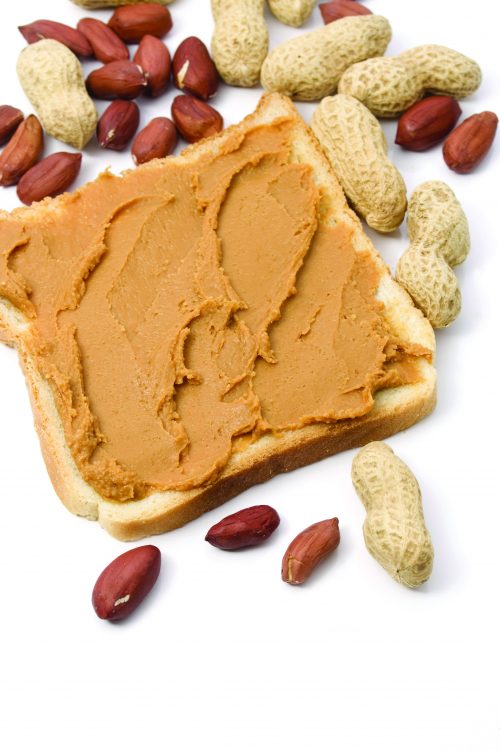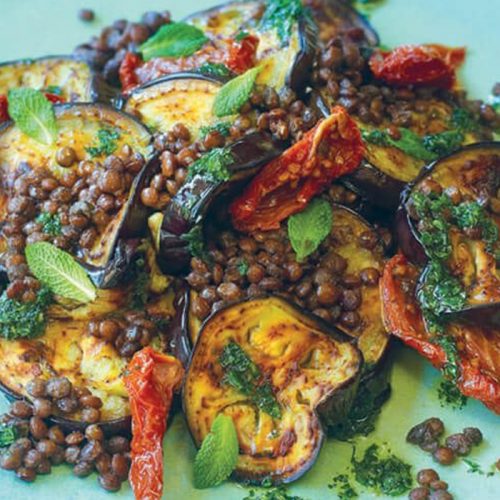
There’s plenty of variety available when it comes to spreadable nut butters. HFG senior nutritionist Rose Carr takes a look at what’s on the supermarket shelves.
Once there was peanut butter and that was our lot. Now we can choose from a much wider range of nut butters. But beware: some pretenders are more sugar than nuts.
What’s available?
Peanut butter
Still our favourite, peanut butter is often the most economical option, too.
Peanut, and other nut butters, are made by roasting nuts then grinding them to make a spreadable paste. In some nut butters that’s all there is to it, while others have added ingredients.
Vegetable oils are often added in varying amounts to make the product consistent year round, as the amount of oil in peanuts will vary through the seasons. Emulsifiers or stabilisers are also commonly used to prevent the oil separating from the solids. Some brands such as 100% Nutz don’t use added oils, emulsifiers or stabilisers and we often see some oil from the peanuts sitting on top. All that is needed is a little mix before using.
Other nut (and seed) butters
Ceres Organics, as well as producing peanut butters, adds variety to our lives with a range of other nut and seed butters. These include: almond butter, cashew butter, pumpkin seed butter, sunflower butter and several different blends such as ABC spread (almonds, Brazil nuts and cashews) and several varieties of tahini (a sesame seed paste).
Peanut spread
A product must contain at least 85 per cent peanuts to be called peanut butter. If we read the labels carefully, we can see that ‘light’ products are actually labelled as ‘peanut spread’ because they are made using fewer peanuts.
Kraft and Select light peanut spreads both contain 63 per cent peanuts compared to 85 to 89 per cent peanuts in their peanut butters respectively. They have added maltodextrin (a starch) to extend the product.
If the goal is to reduce energy intake, we think it’s preferable to use a smaller portion of peanut butter rather using than a ‘light’ product with a filler.
Other nut-based spreads
Hillary is a new brand on the block with a peanut butter as well as a peanut spread containing honey and brown sugar. Both Hillary products contain added wheat gluten, bran crisps, whey protein, vegetable fat and a range of vitamins and minerals. ‘Protein from three sources’ is also highlighted on the front of the pack. This is protein from grains, peanuts and milk. Don’t assume this means higher protein: at 25 per cent protein this is no higher than a 100 per cent peanut butter. We could also get protein from three sources with peanut butter on bread with a glass of milk on the side. But this spread does have a crunchy texture which may appeal.
‘Hazelnut’ spreads
Nutella describes itself as a hazelnut spread with cocoa but don’t be fooled into thinking this is a healthy spread. Ignore the pack claims and check out the ingredients list and nutrition information panel. The main ingredient in Nutella is sugar at 54 per cent (which is why it has to be listed first). It contains only 13 per cent hazelnuts.
Nutritionally, Nutella has much more in common with chocolate than it does with a nut butter. So think of so-called ‘hazelnut spreads’ as chocolate spreads and think about whether you want your children eating chocolate on their toast. Not something we would recommend.
Nutrition
Peanuts are technically not a nut, but a legume like chickpeas or cannellini beans. Legumes, nuts and seeds add healthy fats, protein, fibre and a range of vitamins and minerals to our diets. Nut butters are tasty and nutritious. To get the most nutrition from these foods we prefer those with fewer additives.
Sodium
Many nut butters have added salt. A 20g serve (a rounded tablespoon) of a peanut butter without added salt has virtually no sodium, whereas Kraft Light Crunchy peanut spread with added salt has 125mg sodium. It may not seem like much but our toast has sodium, too, and it all adds up during the day. Choosing products with less or no added salt helps reduce our intake as well as retrains our taste buds.
Sugar
Many nut butters also have added sugar. Our taste for sugar and salt in various foods are learned so we can help children, and ourselves, avoid a lifelong preference for sweeter foods by choosing nut butters without added sugar.
Energy and fat
Nuts and seeds are naturally high in kilojoules as they are around 50 per cent fat, mostly unsaturated fats. A 20g serve of a nut butter provides 470 to 570 kilojoules with nine to 11g fat. For people who need to put on or maintain rather than lose weight, adding more nut butters is a healthy way to do that. For the rest of us, moderation is key.
Article sources and references
- Australia New Zealand Food Standards Code — Standard 1.1.2 — Supplementary Definitions for Foods www.comlaw.gov. au/Details/F2011C00530 Accessed December 2013http://www.foodstandards.gov.au/code/Pages/default.aspx
www.healthyfood.com










